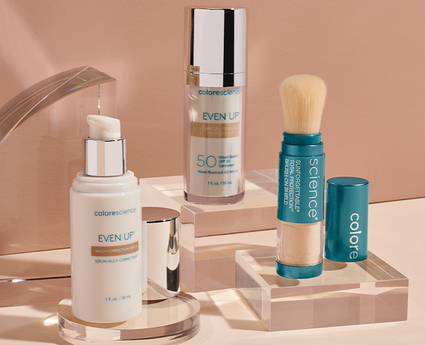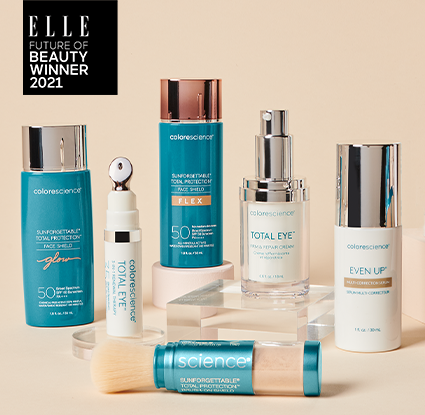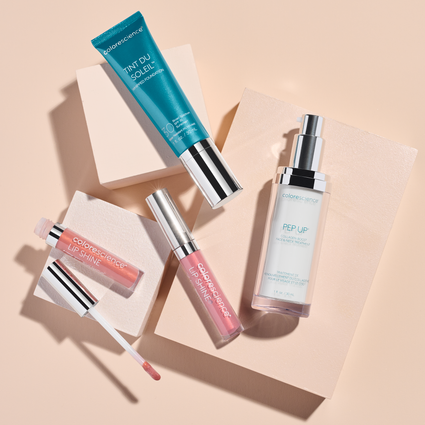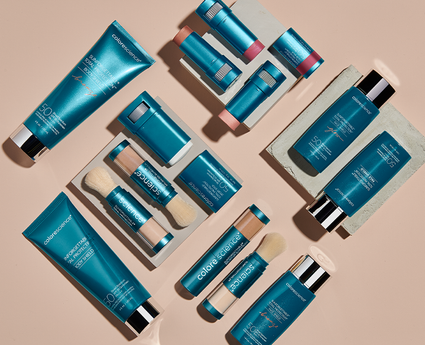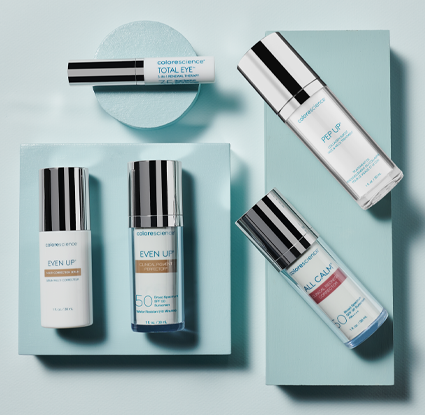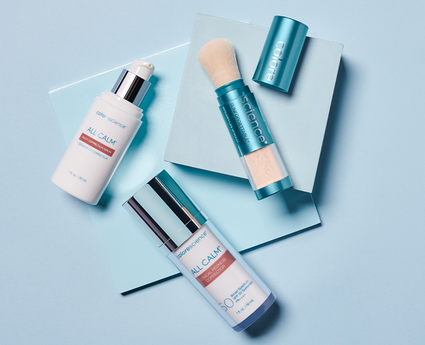What is Combination Skin? [Characteristics & Meaning]
Understanding Combination Skin and How to Treat It
Getting a radiant complexion means understanding your skin type and how to treat it. There are four main skin types: dry, oily, sensitive, normal, and combination.
Do a little experiment. Wash your face with your normal cleanser, then wait an hour. Feel your skin and observe any appearance changes, then match your observations to the descriptions on the left.
If you’ve got combination skin type, use this guide to determine the ways you can best treat and take care of your skin. If you have another skin type, here's how to care for your skin type.
What is Combination Skin?
First, let’s define combination skin. This skin type features two or more different skin types on the face, and the condition of your skin may fluctuate between seasons. Typically, the combination skin type is characterized by dry, flaking skin on the cheeks, while excessive oil and shine appears on other areas of the face.
Those with combination skin are in a constant battle with their T-Zone, which includes the forehead, nose, and chin.
How Can I Tell if I have Combination Skin?
Combination skin is thought to be one of the most common skin types. Watch for these symptoms and signs to determine whether or not you’re dealing with combination skin:
- The appearance of larger pores: If you have oily patches, you may have noticed the pores in these areas look larger. As the sebaceous glands under the skin produce excess sebum (the oily substance that makes your skin look shiny), your pores can become blocked by dead skin cells, causing sebum to build up and enlarge your pores.
You’ve likely encountered plenty of “miracle” remedies designed to make your pores smaller—this remedy doesn’t truly exist. Nothing has been proven to actually reduce the size of your pores, but you can make them look smaller by keeping your pores clear with regular cleansing.
- Shiny skin: Those with combination skin experience shine on at least one portion of their face. For most, this shine is most prevalent in the T-Zone, and occurs because of excess oil production.
- Blackheads and whiteheads: When oil becomes trapped in your pores, it mixes with dead skin cells and other debris, causing a plug. When this plug is open to the air, it causes a blackhead; when it’s closed, it results in the formation of a whitehead.
- You have dandruff: Dandruff isn’t always an indicator of skin type, but many women with combination skin deal with dry, flaky patches on their scalp.
- You deal with dry patches and acne breakouts at the same time: If you have deal with dry patches and acne breakouts simultaneously, you’re likely dealing with combination skin.

What Causes Combination Skin?
Genetics play a large role in determining skin type. Whether you have dry, oily, sensitive, or combination skin, it’s likely that you inherited it from your parents and grandparents. There are more sebaceous glands in the T-Zone, which are responsible for creating sebum, the waxy substance that keeps your skin soft and supple. The glands in this area tend to be more active in those with combination skin type, producing excess sebum that can lead to shine and contribute to breakouts. If your mother or father dealt with oily skin in the T-Zone, and battled acne, you’re apt to deal with this condition as well. Consider facial products for oily skin to achieve better makeup application results.
However, there are environmental factors that come into play. Certain products and lifestyle habits can contribute to combination skin type; using harsh products that contain dry ingredients can trigger your skin to produce excess oil, which can worsen breakouts in the T-Zone while drying out other parts of the face.
What Kind of Products Are Best for Combination Skin?
Those with combination skin may struggle to find the right skin care and cosmetic products. The key is balance: finding products that offer extra moisture to already dry areas, like a hydrating mist spray, without increasing shine and oil in others.
- Avoid Products that Incorporate Excessive Fragrance
If you have combination skin type, you likely deal with dry, flaky skin in at least one part of your face. Dry skin can be sensitive, and may be more easily irritated by products that contain chemically created fragrances. Stick to products with natural ingredients, and avoid chemical irritants that could worsen breakouts and wreak havoc on your skin.
- Avoid Products That Clog Your Pores
Certain products are more likely to clog up your pores. Comedogenic cosmetics and skin care products are purported to promote acne and blemishes—54 percent of women over 25 have some facial acne, making it crucial to find products that don’t make breakouts worse. Stick to non-comedogenic makeup products designed to be gentle on the skin while providing the coverage you need. Colorescience products are made with skin care in mind, playing double duty—get a flawless look without sacrificing your skin health.
- Try Two Different Moisturizers
All skin types benefit from moisturizing, and it’s important to find the right moisturizer for your skin. However, with combination skin, it can be difficult to strike a balance: how do you hydrate dry cheeks without adding to the oily sheen on your T-Zone? For some, it’s a matter of experimentation.
Many with combination skin type find it best to add two different moisturizers to their beauty routine. Typically, heavier, cream-based moisturizers, like this cream for face redness, are best suited for the dry skin found around the cheeks and jawline. In oily areas, use a lighter, water-based moisturizer to keep your skin supple without adding extra shine.
- Don’t Forget to Exfoliate
Exfoliation is crucial for all skin types, but those with combination skin can benefit significantly from the right exfoliating products. Exfoliation can help open up and clear out the clogged pores in oily sections of the face, while allowing moisture to penetrate the skin in dry areas. Certain products provide safe chemical exfoliation, or you can use granular scrubs designed to physically scrape off the dead skin cells that can build up in your pores. If your skin is sensitive, be careful not to over-exfoliate and consider using makeup for sensitive skin if you don't already.

Lifestyle Habits to Help You Treat Combination Skin
- Exercise: Regular exercise can reduce stress and improve both mental and physical health. Physical fitness routines increase the production of endorphins, helping relax the body and contributing to better sleep. Exercise also improves circulation by increasing blood flow, which carries nutrients and oxygen directly to the skin cells. The better your circulation, the better able your body is to carry away waste products, including free radicals that can wreak havoc on your skin. This is true of every skin type, so make sure you’re getting the physical activity you need to heal your body from the inside out.
- Wear Sunscreen: Every time you go outdoors, whether it’s the middle of summer or the dead of winter, apply sunscreen. Be sure to use sunscreen of 30 SPF or higher, applying 30 minutes before you leave the house. Why is 30 the magic number? Typically, the higher the SPF, the better the protection; however, this scale has its limits. SPF 15 products block about 94 percent of UVB rays, SPF 30 products block around 97 percent of UVB rays, and SPF 45 blocks around 98 percent of UVB rays. No sunscreen offers 100 percent protection from UVB rays, but you can add protection by wearing protective clothing layers and seeking out shade when outdoors for an extend amount of time.
Don’t forget to reapply! Put on another layer of sunscreen once every two hours—more often if you’re sweating or swimming.

- Manage Your Stress: Stress can have a major impact on your health, but does it contribute to skin issues? Yes! While stress itself does not cause acne, it can exacerbate certain pre-existing skin conditions. There have been studies that show a clear link between stress and breakouts; one study observed college students over the course of several months. During exam periods (a time where stress levels rise), breakouts were more common.
There are plenty of ways to reduce stress. For some, stress is best managed through regular exercise. For others, meditation proves to be the most beneficial technique. One of the most important ways to reduce stress and keep your skin looking its best—no matter who you are—is through adequate rest. Get to bed early, leave your phone and laptop alone, and get the proper shuteye even on the weekends. Your skin will thank you!
Get the radiant skin you want by treating your combination skin with tender, loving care. Use the right skin care products, follow a regular skin care regimen, and incorporate these healthy lifestyle habits into your daily routine for a glowing complexion.

